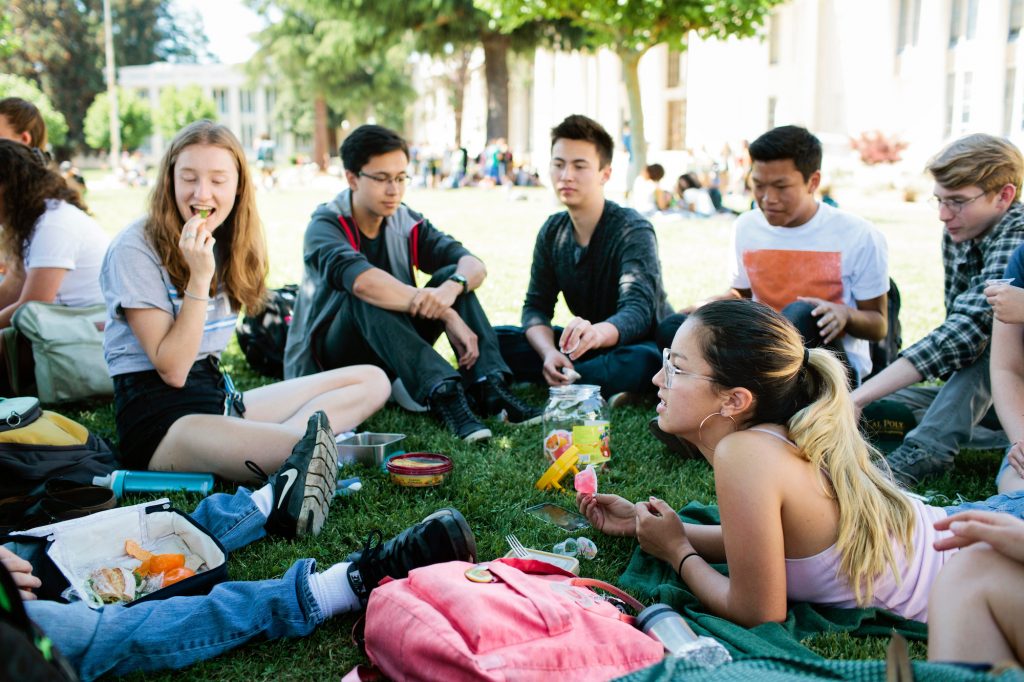
Black teachers: How to recruit them and make them stay

Lessons in higher education: What California can learn

Keeping California public university options open

Superintendents: Well-paid and walking away

The debt to degree connection

College in prison: How earning a degree can lead to a new life

Teachers and administrators throughout California will get additional training on how to improve school environments and implement alternatives to traditional discipline thanks to a state-funded partnership between two county education departments and UCLA.
This week the departments of education in Orange and Butte counties, along with UCLA’s Center for the Transformation of Schools, announced a pilot program to develop a training curriculum based on multi-tiered systems of support (MTSS), an approach to learning and behavioral problems in which students progress through a range of interventions depending on their need levels.
The program, which is funded by a $15-million grant that was part of the budget deal struck by Gov. Jerry Brown and the state Legislature in June, will emphasize restorative justice, social emotional learning and other alternatives that prioritize mediation and building healthy relationships over traditional punishments.
However, it’s crucial that the program address all facets of school culture and student achievement, not just behavior and discipline, said Pedro Noguera, professor of education in UCLA’s graduate school of education and founder of the Center for the Transformation of Schools.
Noguera and others point to persistent racial disparities not only with suspension and expulsion rates, but also with test scores and graduation rates. African-American students are up to three times more likely to be suspended as their white peers for similar infractions. Meanwhile, more than half of all white students meet state standards for English and math proficiency while less than a quarter of African-American and Latino students do.
“The achievement gap and the discipline gap are two sides of the same coin,” Noguera said. “You can’t, for example, address the racial disparities in discipline without addressing them in all the other aspects of a student’s experience at school.”
The collaborators expect to spend year one of the program working with experts and educators to design a training curriculum. Year two will consist of a statewide train-the-trainers effort that they hope will involve 50 to 100 teachers, administrators and other staff from across the state. The focus in subsequent years will be on training at the school and community level.
“For us the hope is schools end up paying as much attention to the social, emotional and behavior needs of children as they do academic needs, and it becomes seamless,” said Christine Olmstead, associate superintendent of instruction for the Orange County Department of Education.
Tim Taylor, superintendent of the Butte County Office of Education, said the scope of the grant gives rural districts the chance to catch up in some respects to their urban counterparts on discipline reform and improving school climates.
“It is a great opportunity for schools to work collectively to create more positive school cultures and environments,” Taylor said. “We have a lot of small districts up north and it is a big deal for these teachers to collaborate with others throughout the state.”

Panelists discussed dual admission as a solution for easing the longstanding challenges in California’s transfer system.

A grassroots campaign recalled two members of the Orange Unified School District in an election that cost more than half a million dollars.

Legislation that would remove one of the last tests teachers are required to take to earn a credential in California passed the Senate Education Committee.

Part-time instructors, many who work for decades off the tenure track and at a lower pay rate, have been called “apprentices to nowhere.”
Comments (2)
Comments Policy
We welcome your comments. All comments are moderated for civility, relevance and other considerations. Click here for EdSource's Comments Policy.
Joseph P BISHOP 6 years ago6 years ago
You make a great point, Lupe. This effort will involve classroom teachers, administrators, school counselors, school counselors, classified staff and district leadership.
Lupe Leija 6 years ago6 years ago
I agree that we need to pay extra attention to social emotional aspects of students’ behavior, but there must be personnel resources available to the school sites. Teachers are expected to be the end-all solution to helping students. A lot of times, if the teacher is helping students with social emotional needs, the academics stay behind. It’s a catch-22 because then the teacher is blamed for a deficiency in one area or another. It’s tough … Read More
I agree that we need to pay extra attention to social emotional aspects of students’ behavior, but there must be personnel resources available to the school sites. Teachers are expected to be the end-all solution to helping students. A lot of times, if the teacher is helping students with social emotional needs, the academics stay behind. It’s a catch-22 because then the teacher is blamed for a deficiency in one area or another. It’s tough to do it all. It can be done, but I think this is a reason why teachers become burned out and leave the profession. We need counselors and psychologists in school sites.